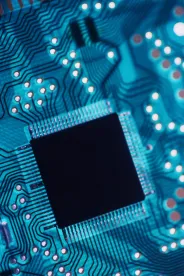Last Week: “Offense” & “Defense” in U.S. Semiconductor Strategy
-
On Dec. 8, the Industrial Advisory Committee (IAC) met to provide an update on the progress of the CHIPS for America initiative’s research and development programs and from committee working groups. The IAC provides guidance to the U.S. Secretary of Commerce related to domestic semiconductor research and development in support of these programs. During the meeting,U.S. Commerce Secretary Gina Raimondo called back to her remarks on China at MIT, arguing that both a defensive strategy, referring to export controls for semiconductor technology, and an offensive strategy, referring to investments in R&D and workforce, are essential for the U.S.’s “national security, its ability to lead, and its global competition with autocratic governments and countries all over the world.”
-
At an event hosted by CSIS on Dec. 6, Alan Estevez, head of the Commerce Department’s Bureau of Industry and Security, also said both defensive and offensive moves are needed to compete. He said, “we will impede the Chinese for a number of years, if we play offense appropriately, that gap will get bigger, because we are innovating at the same time when we are impeding them.”
In Case You Missed It
-
BIDEN VISITS ARIZONA CHIP FACILITY. On Dec. 6, President Biden travelled to Phoenix, Arizona to visit a Taiwan Semiconductor Manufacturing Co. (TSMC) facility and discuss his economic plan, joined by TSMC founder Morris Chang, Apple CEO Tim Cook, Micron CEO Sanjay Mehrotra, AMD CEO Lisa Su, and NVIDIA CEO Jensen Huang. Also in attendance were U.S. Commerce Secretary Gina Raimondo, Sen. Mark Kelly (D-AZ), and Democratic Arizona Reps. Ruben Gallego, Raúl Grijalva, Tom O’Halleran, and Greg Stanton.
-
US-EU TRADE TECHNOLOGY COUNCIL MEETING. On Dec. 5, E.U. and U.S. officials met for the third iteration of the Trade and Technology Council (TTC). The Council reached an agreement to implement an early warning system to mitigate semiconductor supply chain disruptions. They also agreed to share information about the domestic subsidies provided to the sector, with the goal of avoiding “subsidy races and market distortions” and ensuring “a more resilient, sustainable, sustainable and innovative semiconductors supply chain.”
-
JAPAN TO JOIN U.S. EXPORT CONTROL ALLIANCE. According to reports, Japan and the Netherlands have agreed in principle to join the US in tightening controls over the export of advanced chipmaking machinery to China. The measures are expected to be announced in the coming weeks.
-
CHINA HELPS FIRMS COOPERATE WITH U.S. RULES. The Chinese Ministry of Commerce (MOFCOM) has begun to help its domestic companies through end-use checks by the U.S., which are required by the U.S. Department of Commerce prior to removing firms from its Unverified List (UVL). At the CSIS event, Estevez refrained from commenting on where each company is at in the process of end-user checking but emphasized that the goal of the UVL and the Entity List is to drive better behaviors from countries, and “now we are seeing better behaviors.”






 />i
/>i
